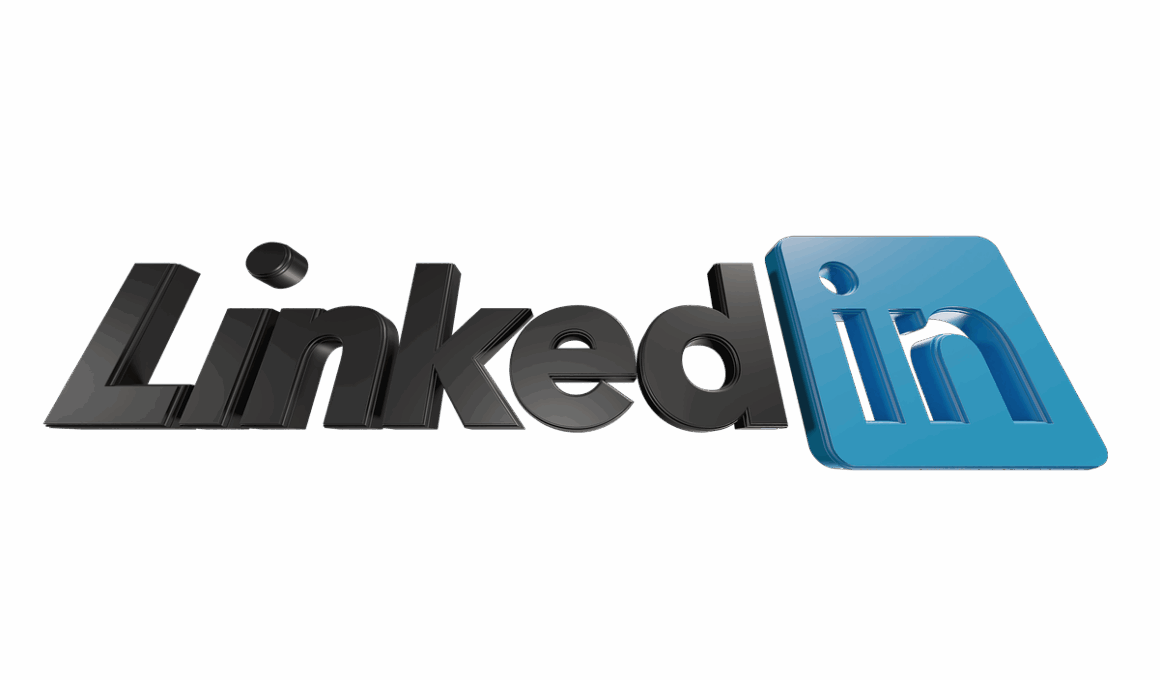Building Your Personal Brand Through LinkedIn Content
Creating a personal brand on LinkedIn involves a concerted effort to produce relevant content that resonates with your target audience. In today’s digital landscape, showcasing expertise and sharing insights can significantly enhance visibility. Regularly posting articles, updates, or thought-provoking questions enables you to engage with your network. This activity encourages interaction, prompting discussions around your expertise. Explore what types of content perform well among your connections. Videos, infographics, and long-form articles are popular formats. Additionally, listening to feedback and insights from your audience becomes essential, allowing you to refine your approach. Utilize LinkedIn analytics tools to evaluate which posts generate the most engagement. Are there particular topics that stimulate conversation? Creating engaging captions can help attract more readers and keep their attention. Moreover, consistency is key; a uniform posting schedule establishes reliability and maintains your presence on the platform. For best results, consider how your posts align with your overall professional goals. Engage in other people’s content by commenting and sharing, fostering community, and growing your brand. Building a personal brand isn’t merely a one-way street but requires collaboration with your network as well.
A crucial aspect of building your personal brand on LinkedIn involves understanding your unique voice and perspective. Differentiate yourself by identifying what makes your experiences valuable to your audience. Leverage storytelling to communicate your journey effectively, weaving personal anecdotes that illustrate your professional growth. This narrative approach fosters authenticity and relatability, encouraging others to connect with your message emotionally. Consider sharing challenges you’ve overcome or lessons learned throughout your career; these insights can serve as inspiration for others facing similar hurdles. Additional strategies include sharing industry news and insights, positioning you as a thought leader among your network. Being proactive in engaging with trending topics can enhance your content’s relevance and visibility. Use relevant hashtags to broaden your reach, potentially attracting users outside your immediate network. Furthermore, take advantage of LinkedIn’s publishing platform to share long-form content that delves deeper into your areas of expertise. Regular engagement and well-crafted posts can significantly affect how others perceive your personal brand. By investing time and effort in creating quality content, you can transform your LinkedIn profile into a compelling representation of your professional identity.
Engaging with Your Audience
Engagement with your audience should be at the forefront of your LinkedIn content strategy. Understanding what your connections are interested in allows you to tailor your content to meet their needs. This can be achieved through surveys or direct messages, inviting your network to share their preferences. Actively replying to comments and encouraging discussions on your posts can help build a sense of community and connection. Networking is about nurturing relationships; sincerity and approachability in your posts can entice more people to interact. Instead of focusing solely on promoting yourself, consider sharing valuable resources or tips relevant to your industry. You can help position yourself as a trustworthy source of information. Also, participating in LinkedIn groups related to your field can expand your reach, allowing you to share your expertise with a wider audience. Engaging in conversations and discussions in these spaces not only increases visibility but establishes your credibility. Remember to follow up on your interactions; continued dialogue can lead to stronger professional relationships and potential opportunities that align with your personal brand goals.
Incorporating visuals into your LinkedIn content can greatly enhance engagement and attract attention. LinkedIn posts that feature images or videos tend to receive higher interaction rates than text-only posts. Therefore, consider adding relevant visuals that support your messaging, such as charts, infographics, or personal photos that illustrate your professional journey. Additionally, using tools like Canva can help create attractive graphics tailored to your brand. Collaborating with designers or using templates can further enhance the professionalism of your visuals. Utilize captions to highlight the key messages your visuals support, making your content easily digestible. Ensure your visuals adhere to LinkedIn’s guidelines, maintaining quality standards while optimizing for sizes specific to the platform. Experiment with different formats to determine which resonates best with your audience. Additionally, videos can provide an opportunity to showcase your personality, making your posts more relatable. Engage with the visual aspect of your content to create an immersive experience for your audience, helping them feel more connected to your journey. The right combination of visuals and thoughtful messaging can create a strong impact on your personal brand development.
Consistency is Key
For successful LinkedIn content strategies, consistency is paramount. Establishing a clear posting schedule helps maintain a steady stream of communication with your audience. By regularly sharing valuable insights, experiences, and industry-related news, you reinforce your presence and reliability on the platform. Aim to post at least once a week, carefully planning the content ahead of time. Utilize content calendars to help you stay organized, ensuring you cover various themes while aligning with your overall branding messages. Consistency nurtures familiarity, transforming your audience into loyal followers who look forward to your insights. While frequency is important, it’s equally vital to maintain quality and relevance within your posts. Share evergreen content that remains applicable over time, alongside timely updates on current trends. This approach can help balance your strategy; curate informative and engaging pieces that reflect your expertise consistently. By remaining active and visible, your personal brand will strengthen, and connections with your audience will deepen as they recognize your commitment to providing value. Remember to reassess your strategy regularly to adapt to changes in engagement and audience preferences over time.
Networking on LinkedIn encompasses not only sharing content but also connecting with other professionals in your industry. Building relationships extends beyond mere connections; engaging with other users’ content demonstrates genuine interest. Prioritize adding value to conversations by providing thoughtful comments and insights. Utilizing features such as LinkedIn’s direct messaging can foster one-on-one connections, allowing for deeper conversations that lead to partnerships or opportunities. In your networking efforts, remember that building a brand takes time; it’s about cultivating relationships rather than merely accumulating connections. Regularly acknowledging others’ achievements on your feed can help strengthen relationships and expand your personal brand’s visibility. Additionally, consider hosting webinars or live events that invite your network to participate and engage with your expertise firsthand. These initiatives encourage active participation and solidify your standing as a knowledgeable figure in your industry. Overall, through dedicated networking and relationship-building efforts, your personal brand can flourish, becoming a recognized and respected presence within your field.
Tracking Your Progress
Finally, tracking your progress on LinkedIn is essential for refining your content strategy. Understanding what works and what doesn’t helps you adapt your approach to better serve your audience. Utilize LinkedIn’s analytics tools to track engagement metrics, such as likes, comments, and shares, on your posts. By analyzing trends, you can identify which content resonates most with your audience. Experiment with different types of content and styles, making adjustments based on performance. Periodically review your connections and followers, assessing whether they align with your target audience. Use this information to tailor your content further, ensuring it meets the needs of your community. Set specific goals for growth and engagement to measure progress effectively. Moreover, consider seeking feedback from trusted connections, inviting them to share their thoughts on your content. This can provide valuable external perspectives that inform your strategy. Regularly reassessing and adapting your content approach based on your findings can ultimately forge a stronger personal brand, representing your professional identity effectively on LinkedIn.
In conclusion, building your personal brand through LinkedIn content requires a multifaceted strategy encompassing engagement, consistency, and tracking progress. By sharing authentic insights and actively engaging with your audience, you can cultivate a trusted professional identity. Remember to incorporate visuals and maintain a regular posting schedule to keep your network engaged. Networking isn’t just about numbers; prioritizing meaningful relationships will deepen connections within your industry. Pay attention to analytics to refine your approach continually, adapting to changes in audience preferences. As you embark on creating your LinkedIn content strategy, remember to remain true to your unique voice and perspective. By investing time and effort in establishing a robust personal brand, you position yourself as a thought leader, unlocking conversation opportunities that can expand your professional horizons. Ultimately, a thoughtful LinkedIn presence can elevate your career and encourage valuable connections that resonate long beyond just the digital interaction. Focus on authenticity, community-building, and continuous improvement to ensure your personal brand thrives in a dynamic professional landscape.


